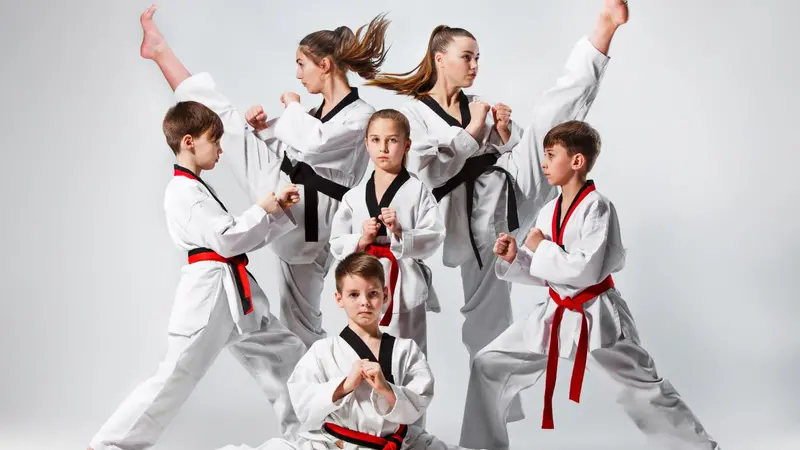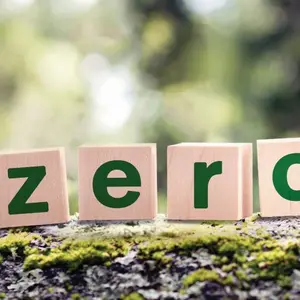
Fit Body
Fit Body
Discovering the World of Martial Arts: A Look at Five Popular Modalities
Traditional martial arts date back more than 2,000 years and have blossomed into about 200 styles. While originally devised to assist in hunting and protect against enemies, these practices also offer philosophical and spiritual guidance as practitioners establish a mind-body-spirit connection. According to Statista, a German-based market research company, nearly 6.2 million people in the U.S. participate in some form of this sport.
“Martial arts are for everyone, and it’s never too late to start,” says John Fonseca, an Illinois-based trainer specializing in karate, jiu-jitsu and other self-defense modalities. He is the first karate athlete in the world to win repeat gold medals at the Pan American Games, the first American to medal at the Karate World Championships in almost 16 years, and the first American to win the Paris Open in more than 30 years.
According to Fonseca, “Short-term benefits of any martial art include improved fitness, self-confidence and stress relief. While long-term benefits are hard to count, they may include increased discipline, self-defense skills and a sense of personal growth. Remember: Every black belt was just a white belt that never gave up.”
When advising beginners, the champion says, “It’s important to choose a style that suits your goals and fitness level. Each modality offers unique benefits. Find a reputable instructor or school, start gradually to avoid injury and maintain a consistent practice routine for better progress.”
Karate

Nomad Soul/Shutterstock.com
With origins in Okinawa, Japan, dating back to the 17th century, the guiding principles of karate include respect, humility, perseverance and self-discipline. “A karate practice starts with Kihon, or basic fundamentals, that include a variety of punches, kicks, knee strikes, elbow strikes, blocks and stances,” Fonseca explains. “These techniques are practiced repeatedly to develop muscle memory, accuracy and power. They are further developed in choreographed sequences called Kata, which simulate various applications for self-defense situations.”
Practitioners perform these routines solo in a specific order and then practice the bunkai, or applications, with a partner to develop self-defense skills. “Lastly, kumite is the sparring component of karate training to develop timing, distance, adaptability and the ability to receive and deliver strikes. It involves practicing techniques and strategies against a live, resisting opponent. Depending on the training level and focus, kumite can range from controlled, pre-arranged drills to freestyle sparring with varying levels of contact,” says Fonseca.
Capoeira

oneinchpunch/Shuttestock.com
A martial art disguised as dance, capoeira is performed to music and traditional songs, including rhythmic clapping and drumming. Players form a circle, at the center of which two participants engage with one another in a combination of fighting and dancing. The art form was created in Brazil by African slaves in the mid-16th century. Although banned by the government after the abolition of slavery in 1888, many people continued to practice in hidden spaces. Modern capoeira was later developed around 1930, with several styles taking on their own characteristics. Emphasizing deception, flexibility and fluidity, participants learn discipline, confidence and self-control, while the use of music and instruments provides a multi-sensory experience.
Aikido

Anna Jurkovska/Shutterstock.com
Aikido, which means “the way of harmony with the spirit,” originated in 14th-century Japan and was modernized during the 1920s. Although it is mainly a throwing and pinning art, practitioners also utilize strikes, kicks, sweeps and come-alongs.
According to Greg O’Connor, chief instructor at Aikido Centers of New Jersey, “Aikido is the most challenging and most ethical of the martial arts, and the most difficult to achieve any level of black belt rank. Our practice requires working with a partner on the specific attack and technique demonstrated by the instructor. Each partner takes turns in this practice with safety for each other in mind, and we train to handle an aggressor with the full awareness that there are no rules in a self-defense situation.”
O’Connor describes aikido as a magical skill, because as the participants learn to be patient and persevere, they often discover eye-opening alternatives to violence. It requires full integration of mind, body and spirit, as well as an awareness of how our minds and emotions can work against us, he says.
Jiu-Jitsu

UvGroup/Shutterstock.com
Jiu-jitsu originated in Japan, evolving over centuries, with Brazilian jiu-jitsu further developing in the early 20th century. Fonseca says that the practice focuses on leverage, technique over strength, control and adaptation. Students will first learn and practice positions, transitions, escapes and submissions, then engage in those techniques with a partner to refine their movements, timing and muscle memory.
“Live sparring, known as rolling, is a crucial aspect of jiu-jitsu training. During rolling, practitioners engage in controlled but dynamic matches with resisting opponents. The goal is to apply learned techniques, gain positional control and attempt submissions,” Fonseca explains. “Rolling helps students develop timing, adaptability and practical application of techniques; enhances concentration, awareness, self-esteem and focus; and creates a sense of balance and calm.”
Taekwondo

Master1305/Shutterstock.com
The Korean-based practice of taekwondo was developed during the 1940s as a blend of native fighting styles. Students learn kicking, punching and blocking techniques, which are applied to various forms of self-defense. According to the International Taekwondo Association, the philosophy is to build a more peaceful world, and that starts with developing individual character and positive morale. Through repeated practice and exercises, students learn courtesy, integrity, perseverance, self-control and an indomitable spirit. These five tenets are recited at the start and end of every class and become the foundation of both the students’ development as individuals and as martial artists.
Carrie Jackson is a Chicago-based freelance writer. Connect at CarrieJacksonWrites.com.
Original article published at Natural Awakenings


 By
By







